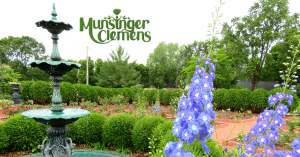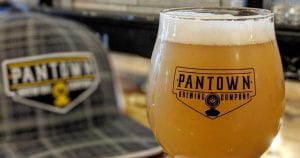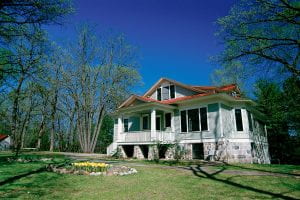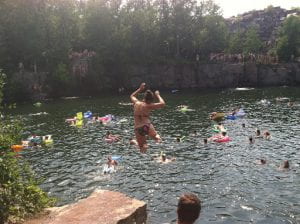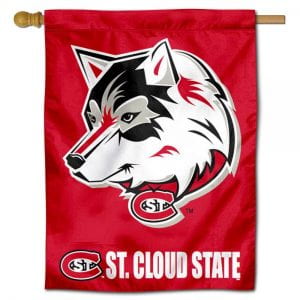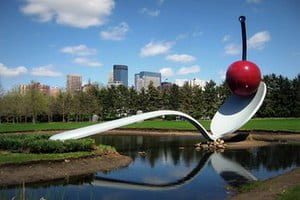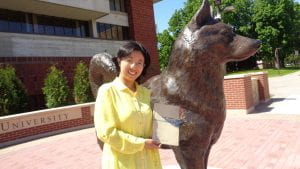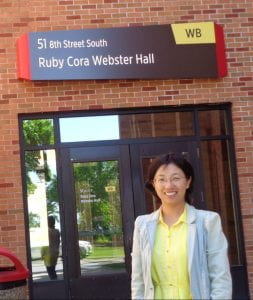I’m an SCSU graduate student, a Graduate Assistant, and the English Department blog and social media manager. I am also a 5th and 6th grade English and Social teacher at a local elementary school.
 In honor of Indigenous People’s Day this year (October 12), I took my 5th and 6th graders on a field trip to listen to my dear old 78-year-old friend, Julius, talk about his time doing mission work on the Red Lake Reservation where he spent 20+ years living and working alongside the Indigenous People living on the reservation.
In honor of Indigenous People’s Day this year (October 12), I took my 5th and 6th graders on a field trip to listen to my dear old 78-year-old friend, Julius, talk about his time doing mission work on the Red Lake Reservation where he spent 20+ years living and working alongside the Indigenous People living on the reservation.
My students were absolutely fascinated learning about Indigenous Peoples from someone who’s lived and experienced their way of life. It was so much better to hear him speak than to have my students read more out of a textbook. They thoroughly enjoyed learning about the Indigenous Peoples’ way of life! Instead of me sharing my experience, I’d like to share their experiences (in the red text) (and insert clarifications when necessary).
 I like that he explained what he did. My favorite artifact was the dream catcher. My favorite part was when he said they came to take him home. The most interesting part was when he talked about the artifacts and how they were made with love. I did not dislike anything.
I like that he explained what he did. My favorite artifact was the dream catcher. My favorite part was when he said they came to take him home. The most interesting part was when he talked about the artifacts and how they were made with love. I did not dislike anything.
This student talked about the time when “they came to take him home.” Julius told a story about how years after his time on the Red Lake Reservation, his Indigenous friends invited themselves over to his house one day. When they arrived, they said, “Julius, we’re here to take you home.” They surrounded him and said they weren’t leaving his home without him. Obviously, they were only slightly serious as they knew he had other obligations in his life at that time and he couldn’t go back. The story demonstrated how much the people on the Reservation loved and respected him!
 This student also talked about some of the Indigenous artifacts he had on display. He talked about how everything they create is made with love. He also showed many of the gifts these people had gifted him over the years. Everything was absolutely beautiful!
This student also talked about some of the Indigenous artifacts he had on display. He talked about how everything they create is made with love. He also showed many of the gifts these people had gifted him over the years. Everything was absolutely beautiful!
 What I thought was it was very cool. It was very fun to see the paintings he showed to us. The turtle shell was cool. I liked it because there were so many details on the shell. I liked to see the process to see what they did to get it to look that cool. I liked the canoe. It was so cool because you could see all of the details on the canoe. My favorite thing there was the painting that he got from a kid that he drove a bus for. It was so cool to see what he did when he was younger. It was a cool experience.
What I thought was it was very cool. It was very fun to see the paintings he showed to us. The turtle shell was cool. I liked it because there were so many details on the shell. I liked to see the process to see what they did to get it to look that cool. I liked the canoe. It was so cool because you could see all of the details on the canoe. My favorite thing there was the painting that he got from a kid that he drove a bus for. It was so cool to see what he did when he was younger. It was a cool experience.
Part of his mission work was to drive a school bus route for their local school (as you can see in one of the later pictures; he’s wearing his bus driver jacket!). He told many stories about the kindness the students showed him. Many of the students painted or drew him pictures as gifts. Since they didn’t have much, they would give handmade items as gifts.
 I think it was cool for the stuff on the table, and I think it was cool that he could speak their language. My favorite thing about it is how good they are at art. My favorite artifact was the pictures. He should put more stuff on the table.
I think it was cool for the stuff on the table, and I think it was cool that he could speak their language. My favorite thing about it is how good they are at art. My favorite artifact was the pictures. He should put more stuff on the table.

One point Julius stressed was the importance of learning a second language. He can speak fluent Ojibwe, but he suggested my students learn Spanish.
At one point, Julius recited the “Our Father” prayer in Ojibwe! It was really quite amazing! The written version of the “Our Father” is pictured here.
 I loved it. It was so interesting. It was so cool to listen to all he had to say. I didn’t dislike anything. It was so awesome. The most interesting thing was all the pictures and artifacts. My favorite part was listening to everything. My favorite artifact was the birch bark wood canoes.
I loved it. It was so interesting. It was so cool to listen to all he had to say. I didn’t dislike anything. It was so awesome. The most interesting thing was all the pictures and artifacts. My favorite part was listening to everything. My favorite artifact was the birch bark wood canoes.
 Everything was really cool and the paintings were amazing. The language was cool too. And the boats made out of bark and stuff were really cool. The necklaces were cool too. Everything was really cool. But my favorite thing was the turtle shell. It was REALLY cool.
Everything was really cool and the paintings were amazing. The language was cool too. And the boats made out of bark and stuff were really cool. The necklaces were cool too. Everything was really cool. But my favorite thing was the turtle shell. It was REALLY cool.
I’ve always honored Indigenous People in my classroom, but this year was way more impactful to my students.
We’re curious to know:
How do you honor Indigenous People?
What was your favorite artifact that Julius showed the children? (I know, the pictures aren’t amazing and don’t show everything.)

